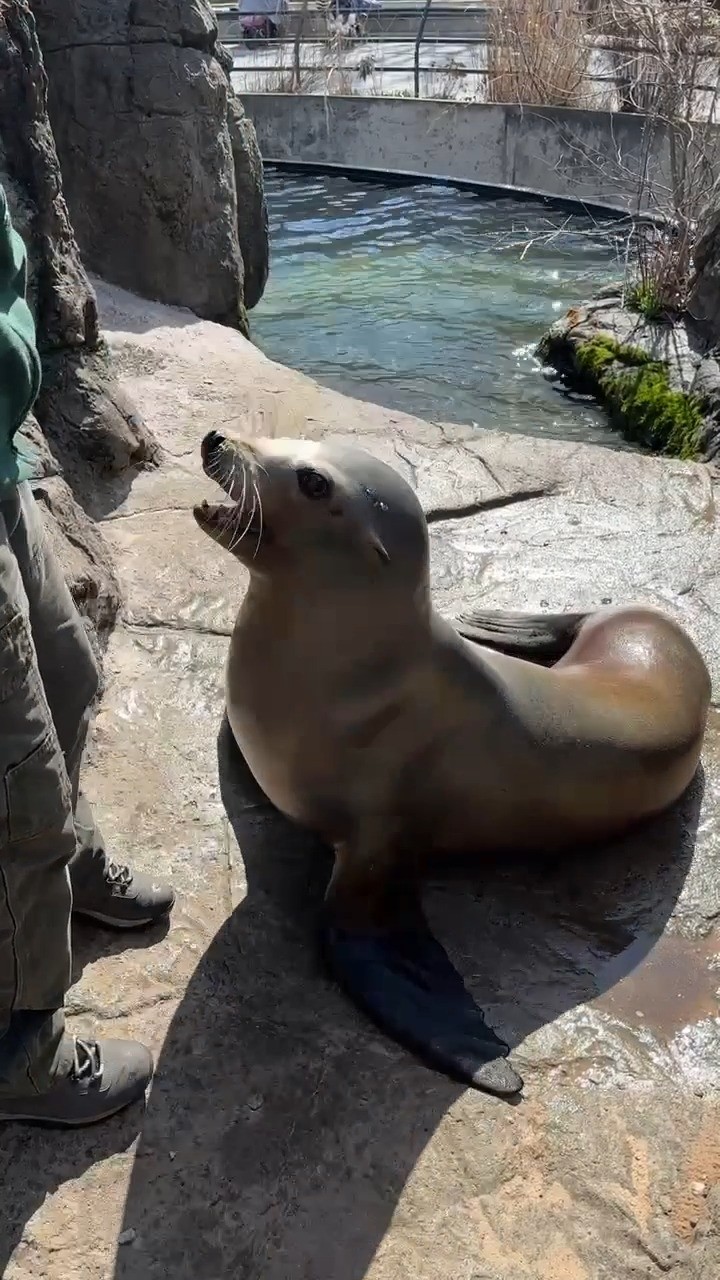- Understanding cataracts in marine mammals and their impact on behavior and health
- The role of tactile cues in animal training, particularly for visually impaired animals
- The relationship between trainers and animals in facilitating health care routines
- The value of husbandry training in promoting the well-being of older sea lions
- Insights on wildlife conservation and the significance of individualized care in zoos
Cataracts in California sea lions can present a challenging yet intriguing aspect of marine mammal health and behavior. These opacities in the lens of the eye can cause vision impairment, which may affect the animal’s ability to move and interact with its environment. Understanding the impact of cataracts on sea lions requires a multi-faceted approach that delves into both the biological factors and the management practices that support these animals.
Cataracts develop when proteins in the lens clump together, reducing light transmission and clouding vision. The condition commonly affects older animals, just as it does in humans. In marine environments, sea lions rely heavily on their keen eyesight for navigating waters and spotting prey. As a result, cataracts can greatly hinder their natural instincts and actions.
For Senior Keeper Gwen, working with an aging California sea lion displaying early signs of cataracts means adapting training techniques to accommodate her reduced vision in the right eye. This shift is not just a simple adjustment; it reflects a deeper understanding of animal behavior and welfare. By incorporating tactile cues into the training regimen, Gwen effectively bridges the communication gap created by vision loss. Tactile signals complement verbal and hand commands, offering the sea lion an additional sensory input to decipher keeper instructions. For instance, when Gwen gently touches a specific part of the sea lion’s body, it signifies an action like lying down, a position necessary for medical assessments and procedures.
The integration of tactile cues has roots in the history of animal training, especially for those with sensory impairments. This approach underscores the importance of flexibility in training strategies. Immediate results from these adjustments highlight not only the adaptability of sea lions but also the depth of understanding and relationship between the trainer and animal. Sea lions are known for their intelligence, and their ability to learn new behaviors or adapt existing ones in the face of adversity stands as testament to their cognitive capabilities.
Building this level of trust in the trainer-animal relationship is crucial. Gwen’s decade-long association with the sea lion is a testament to the commitment and expertise required in animal care. Daily interactions, such as feeding sessions, reinforce this bond, creating a safe and trusting environment for the sea lion. This dynamic makes it easier for the animal to participate in essential husbandry practices without distress.
Husbandry training forms the cornerstone of animal care in zoos. For aging sea lions, such training is invaluable, ensuring that routine medical evaluations and procedures cause minimal stress. Through husbandry practices, animals voluntarily participate in health care activities, from receiving injections to undergoing physical check-ups. The willingness to engage in such practices stems from positive reinforcement and the strong rapport established with trainers.
This case of a sea lion with vision impairment goes beyond individual care; it offers insights into broader conservation efforts. Zoos serve as both refuges and educational platforms, emphasizing the conservation of species and addressing the needs of individual animals. Tailored care strategies highlight the zoo’s role in providing enriched environments that mimic natural habitats while attending to health issues as they arise.
The story of our older female California sea lion sheds light on the importance of individualized, compassionate care in animal management. Recognizing each animal’s specific needs allows for more effective care and reinforces the zoo’s commitment to wildlife conservation. Such efforts are pivotal in conserving marine mammals and ensuring their well-being in both wild and captive environments.
Ultimately, the narrative of Gwen and her sea lion illustrates the profound impact that dedicated animal care can have on wildlife conservation and management. By employing innovative training methods and fostering strong human-animal relationships, zoos continue to play an essential role in preserving biodiversity and promoting animal welfare worldwide.
*****
Source Description
Recently, one of our older female California sea lions started exhibiting symptoms of cataracts in her right eye. Senior Keeper Gwen has worked with this animal for over a decade and has begun to use more tactile cues in her training to help compensate for reduced vision in her right eye.
As you can see in this video, our sea lion can learn new behaviors and practice those she already knows, many related to her health care and husbandry. In addition to verbal and hand signals, Gwen also uses touch as another cue for each specific behavior. This helps our female sea lion associate keeper touch with a particular action that she would generally be able to perform with her vision. Some behaviors, like the lay down (or “sleep”), are trained for so that the keeper can check her body for any potential injuries. She also receives voluntary injections (annual vaccines) in this position.
Our female sea lion’s long history of husbandry training and willingness to learn eased this process. This is also an incredible testament to the trainer-animal relationship. You can see Gwen working with her during one of our daily sea lion feedings!


